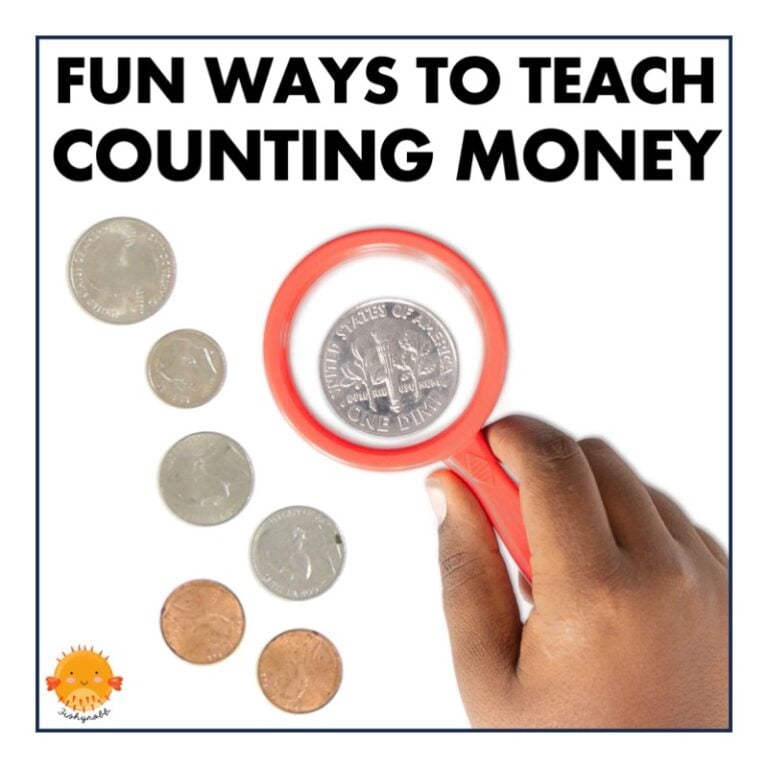
Free Place Value Printable Chart And Games For Grades 1 To 5
In this blog post, we’ll explore some activities that build number sense from kindergarten through 5th grade and you’ll get to download a free place value printable chart to use with your students.
Place value is a foundational math concept that students learn and work on throughout their school career. It is so important for kids to develop a good understanding of place value because our number system is the basis of all math. No matter what grade you teach, I bet you spend a good part of the year on place value concepts in one form or another.
.

.
What is place value and why do we teach it?
The simplest definition of place value is the worth or value of each digit in a numeral. It also includes the relationship between those digits. Depending on what grade level you teach, your place value unit in math may include:
- visual representation of numbers
- expanded form vs. standard form
- identifying the value of a digit
- comparing numbers
- rounding numbers
- converting between place values
- decimals
.
No matter what grade you teach, the goal is for students to develop a flexible understanding of place value. Just like learning the code of our phonics system leads to reading literacy, cracking the code of our place value system leads to math literacy.
Little ones who have learned to recognize numbers and count know what a 3 looks like and what it represents. But they don’t understand that a 3 can also represent 30 or 300 or 3,000 depending on its position in a numeral. This is the challenge of teaching place value. Even more challenging is the concept that each place value position is 10 times greater than the position to its right. It’s a lot to wrap your head around as a kid.
Nonetheless, these ideas are critical to success in math. They are the foundation of nearly all other operations in our base-ten system including addition, subtraction, rounding, long division, fractions, and exponents.
.
Place Value Activities for Every Grade
I’ve worked as a math intervention teacher in every grade K through 5, which means I’ve spent a LOT of time teaching place value. The most valuable tool for this is a set of base-ten blocks. Kids need to be able to see, hold, and manipulate before they can’t move to abstract representation. And if you think 5th graders are too old for math blocks, you’re wrong. They can be used to teach decimals too!
I also love using games to teach math in my groups because they are super engaging, even for kids who don’t enjoy math, and they let students apply math skills in a different way than worksheets. Most games are also more hands-on which is great for kinesthetic learners.
Here are some of the most helpful (and fun) place value activities that have had a big impact on my struggling students as each grade level:
.
1st and 2nd Grade
In first grade, students begin working with 2-digit numbers to develop an understanding of the tens place. This is when the foundation is laid for understanding multi-digit numbers and regrouping. This learning extends into the hundreds place in 2nd grade. Younger students who can easily recognize and represent 2-digit numbers in different ways will have a much easier time working with larger numbers later on. So it’s important that they really master these early place value skills.
My favorite way to build these skills is by playing Trade Up. This is a simple game involving base-ten blocks and dice.
.
.
To play the game, students take turns rolling the die and collecting unit blocks (ones). Once 10 ones have been collected, they can be traded in for a tens rod. The goal is to be the first player to collect enough blocks to trade up to a hundred. This game is a great way to teach the structure of our base-ten system and the value of digits in a number.
When my students play this game, I add a little extra to it. Each time a player rolls the die and collects blocks, they also color in their new total on the hundreds chart. This strengthens the connection between place value and base-ten numerals. For this, you will also need a hundred chart for each player (download a free one in this blog post: Math Manipulatives Every Teacher Needs).
.
3rd Grade
By 3rd grade, students usually have a pretty good handle on tens and ones and can identify the value of a digit even through the hundreds. Comparing numbers and digits through the thousands is something I spend a lot of time on in my third grade groups.
A fun way to teach this skill is with a game called Place Value Battle. All you need to play is a deck of cards (using numbers 1 through 9 only) and a whiteboard for each player.
.
.
Here’s how it goes:
- Each player draws 4 cards and arranges them to make the largest number possible.
- Players compare their numbers and earn points for each place value column in which they have the larger number.
- They keep track of their points on their own whiteboard.
- After 3 rounds, players add up their points to see who the winner is.
.
Here’s an example round:
I have drawn four cards to make the number 9763. My partner made the number 8755 with his cards. I would earn 6 points in the thousands column and 1 point in the tens column. My partner would earn 2 points in the ones column. Neither of us would get points for the hundreds since we have the same number in that column.
This game is great practice for not only comparing numbers, but also using place value to add multi-digit whole numbers.
.
Place Value Read Aloud

A fun read-aloud about place value for 2nd to 3rd grade is Sir Cumference and All the King’s Tens by Cindy Neuschwander. This story demonstrates how understanding place value can provide a much faster and more efficient way to count a large number of items (in this book, it’s a big crowd of guests). Not many kids’ books focus on a useful application of math in a real-life scenario like this one does.
.
4th Grade and 5th Grade
In upper elementary, students are working with numbers into the millions and beyond. This is also when they learn decimals. It’s important for students to understand that decimals are a way to write fractions of a whole number and that a decimal point represents the separation between whole numbers and fractions.
The games I like to use with my fourth and fifth graders build number recognition with large numbers and decimal places. Both of these games utilize plastic 7-day pill organizers and dice. You can get pill organizers for about a dollar at Walmart or a pharmacy. You’ll need to prepare the organizers by labeling each section as shown below and put dice inside.
.

In the first game, students compare numbers through the millions place. This game uses pill organizers labeled like the blue one in the picture. This is a very simple game played like War.
- Each player shakes their dice box (pill organizer).
- They open each section to reveal their number.
- The person with the largest number gets a point.
- The first player to get 10 points wins.
.
The second game uses pill organizers labeled like the green one in the picture. It is for learning decimals and can be played in two ways. With the first option, students shake and compare their numbers.
The second option is to have students build a decimal number. This should be a teacher-led activity and is great for your guided math groups.
To play:
- Call out a number (for example: four hundred thirty two and twelve hundredths).
- Students arrange their dice in the organizer as quickly as possible.
- The first student to build the number correctly gets a point.
.
If you are using regular 6-sided dice, make sure the numbers you call out include no digits higher than a 6.
.
Free Place Value Printable Chart
No matter what grade you teach, giving students a visual reference when learning place value is extremely beneficial. To help you with this, I have two free printable charts that you can download right now!
The first chart can be used in 1st through 4th grade. It includes ones, tens, hundreds, and thousands. Not only does this colorful place value chart provide a visual representation, but it also shows the relationship between each digit.
.

For primary grades, put the chart together without the x10 and ÷10 pieces. For 3rd and 4th grade, these pieces are helpful as students learn to multiply and divide by multiples of ten and convert between place values.
.
The second chart works for 4th, 5th, and 6th grade. It is a simple decimal place value chart that shows the digit values of whole numbers through the hundred thousands and decimal numbers through the thousandths.
.
This chart can be printed out and put in student folders as a reference sheet. You can also laminate it so students can write on it. It’s a great tool during math groups. Give students a number to write on the chart, putting one digit in each column.

.
To get these free place value printable chart posters, just click the button below:
.
.
More Place Value Activities
Do you need more resources for teaching place value? Check out these items from the shop:









